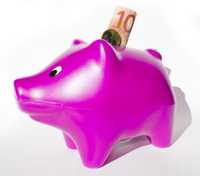| Home | About | Archives | RSS Feed |

The Independent Investor: Japan Embraces Bushido
 |
It was a word rarely spoken in postwar Japan. Bushido, or the "Way of the Warrior," evoked too many embarrassing and shameful memories culminating in the horror of Hiroshima and Nagasaki. But times have changed.
On Dec. 26, Prime Minister Shinzo Abe did the unthinkable. Defying the Koreas, China and the U.S., he visited the Yasukuni war shrine. It is where the memories of 2.4 million Japanese dead from three wars are remembered. His 30-minute visit sparked outrage from Japan's neighbors who view the shrine as a symbol of Japan's imperial military past.
Last Tuesday, the Japanese government confirmed my thesis presented to readers six months ago. On Tuesday, it announced a significant increase in its defense spending over the next five years amounting to 24.6 trillion yen ($237 billion). That's an increase over the current plan and, in my opinion, the defense budget will be increased again and again as time goes by.
They will use the money to acquire surveillance drones, 28 American F-35A fighter jets, 17 Osprey aircraft, five naval destroyers, six submarines plus amphibious vehicles. That's not all. Japan's existing Self-Defense Forces will be beefed up with a new amphibious unit (similar to the U.S. Marine Corp) whose job would be to re-take islands captured by the enemy.
Abe also announced the establishment of a U.S.-style National Security Council and gained support for changing the country's constitution, specifically Article 9, which prevents Japan from "collective self-defense" (coming to the aid of its allies).
Clearly, Japan is rebuilding its defense capability. This sea change will have long-term repercussions for the Japanese economy and the balance of geopolitical power in Southeast Asia. It also adds to U.S. security while reducing our costs as we begin to share the role of the world's policeman.
In my last column back in August, "Japan's New Frontier," I argued that this island nation was on the eve of re-inventing itself. I predicted that as part of an economic renaissance, Prime Minster Abe and his cabinet was preparing to expand its defense capabilities. Re-armament, in my opinion, would address several issues simultaneously.
An expanding defense industry would provide a large number of highly skilled, highly paid jobs for the country's workforce. It would also be an easy avenue for the government to provide spending and additional stimulus to the economy. It would answer the U.S. government's on-going request that Japan shoulder more responsibility in policing their side of the globe, specifically Southeast Asia. And finally, the return of the samurai in the form of a stronger army, navy and air force would provide a strong detriment against encroachment from China, North Korea and, someday, possibly a more aggressive Russia under Putin.
Recent events have played into the hands of Abe in martialing support in his quest toward bushido. China's arbitrary declaration of an exclusive "air-defense identification zone," covering the disputed Senkaku Islands recently lent credence to Abe's argument that Japan must be willing and able to protect its own territory or else others would take it from them.
This argument reverberates in other parts of Asia. Vietnam and the Philippines have their own disputes with China over territory. It is no accident that Japan, using last month's typhoon damage in the Philippines, dispatched troops, ships and generous amounts of aid while China did next to nothing. It was the largest deployment of Japanese forces since 1945.
Most readers are aware that I have been bullish on Japan, its economy and stock market for the last two years. Everything I see convinces me that my investment stance is correct.
Bill Schmick is registered as an investment adviser representative with Berkshire Money Management. Bill’s forecasts and opinions are purely his own. None of the information presented here should be construed as an endorsement of BMM or a solicitation to become a client of BMM. Direct inquires to Bill at 1-888-232-6072 (toll free) or email him at Bill@afewdollarsmore.com.
The Independent Investor: What the Fed Taper Means For You
 |
This week the Federal Reserve Bank announced the beginning of the end of its years-long support of the financial markets. Granted, $10 billion per month of reduced purchases is a baby first step, but over the next year, the Fed is hoping they can reduce its bond buying altogether.
For the overwhelming majority of Americans, the fact that the central bank has begun to taper its $85 billion a month of bond purchases is good news. It reflects their view (and mine) that both employment and the economy overall are gathering momentum.
In Wednesday's policy statement, the Federal Open Market Committee took great pains to promise that they would keep short-term interest low until after the unemployment rate dropped below 6.5 percent. They said nothing about longer-term interest rates. We can expect to see medium and long-term interest rates (but not short-term) continue to climb for the foreseeable future.
That means that the return you can get in a money market fund or certificates of deposits of one year or less will remain abnormally low.
If you have been vacillating on whether to take out a15 or 30 year mortgage now, or wait for lower rates, don't wait any longer — commit. On the other hand, if you have been hoping against hope that the price of that long-term U.S. Treasury bond or municipal bond you hold is going to regain its former premium price level — forget about it.
You, who remain unemployed and about to give up, don't. Corporations and small businesses will take their cue from the Fed. If the Fed sees growth, and they do, corporations will begin to add to capacity. That means more jobs. As time goes by, those of you who are not satisfied with your job, for whatever the reason, good news is around the corner. More job openings, at better salaries, with more opportunities usually accompany economic growth, so get your resume ready.
Stock market investors also benefit. Market participants can deal with the good and the bad, but uncertainty is a stock market killer. For most of this year, investors have been waiting and worrying about the impact of the Fed's taper. It is true that quantitative easing was an experiment born of necessity. During the financial crisis, the Fed had no choice but to step in to avoid a melt-down of the entire financial system.
The experiment continued as the Fed then tried to use monetary stimulus to grow the economy and stem unemployment. No one knew what would happen or if they would succeed.
Would the end of stimulus trigger a collapse in the financial markets? Would the Fed get it right, tapering at the same rate as the economy grew? Would interest rates spike and stock markets swoon?
These were all legitimate concerns and now we appear to be getting some answers. True, it is still early days and tapering has just begun, but so far so good. It appears that the Fed just might pull off the greatest experiment in modern financial history and benefit us all to boot.
Bill Schmick is registered as an investment adviser representative with Berkshire Money Management. Bill’s forecasts and opinions are purely his own. None of the information presented here should be construed as an endorsement of BMM or a solicitation to become a client of BMM. Direct inquires to Bill at 1-888-232-6072 (toll free) or email him at Bill@afewdollarsmore.com.
The Independent Investor: IRA Distribution Time
 |
Information abounds on why and when you should contribute to a tax-deferred savings plan such as an Individual Retirement Account (IRA). Less is known about what happens in retirement when you have to take money out of these plans. For those who turned 70 1/2 years or older in 2013, pay attention, because it's distribution time.
The original idea behind tax-deferred savings was to provide Americans a tax break in order to encourage us to save towards retirement. Individuals could stash away money tax-free while they were working and then take it out again once they retired, when they were presumably earning less and at a lower tax rate. The government determined that once you reached 70 1/2 you have until April 1 of the next tax year to take your first distribution. If you are older than that, you only have until the end of the year.
Officially, it's called a Required Minimum Distribution (RMD) and applies to all employee-sponsored retirement plans. That includes profit-sharing plans, 401(k) plans, Self Employed Persons IRAs (SEPS), SARSEPS and SIMPLE IRAs, as well as contributory or traditional IRAs.
The individual owner of each plan is responsible for computing the MRD and taking it from their accounts. There are stiff IRS penalties (of up to 50 percent of the total MRD) levied on those who fail to comply. The RMD is calculated by taking the total amount of money and securities in each IRA, or other tax-deferred plan, as of December 31 of the prior year and dividing it by a life expectancy factor that the Internal Revenue Service publishes in tables. The document, "Publication 590, Individual Retirement Arrangements," can be easily accessed over the Internet.
As an example, let's say at the end of last year your IRA was worth $100,000. You are 72 years old. Looking up the life expectancy ratio in the IRS table for that age, which is 15.5, you divide your $100,000 by 15.5. Your RMD for this year would be $6,451.61 (100,000/15.5 = 6,451.61).
Remember that you must compute your RMD for every tax-deferred account you own. However, you can withdraw your entire distribution from just one account if you like. You can always withdraw more than the MRD from your accounts, but remember that whatever you withdraw is taxed at your tax bracket. If you make an error and withdraw too much in one year, it cannot be applied to the following year. And before you ask, no, you can't roll the RMD over into another tax-deferred savings account.
What happens if you forget or for some reason you cannot take your RMD in the year it is required? You might be able to avoid the 50 percent penalty if you can establish that the shortfall in distributions was the result of a reasonable error and that you have taken steps to remedy the situation. You must fill out Form 5329 and attach a letter of explanation asking the IRS that the penalty be waived.
For those who have an Inherited IRA, you too may have to take a RMD before the end of the year. The calculations and rules are somewhat different. Generally, if you have received the inheritance this year, as the beneficiary, you have the choice of taking one lump sum, taking the entire amount within five years or spreading out the distributions over the course of your life expectancy, starting no later than one year following the former owner's death. The IRS produces a table for use by beneficiaries in Publication 590 as well.
Many retirees have a hard time remembering to take their MRD each year. It is a good idea to ask your money manager or your accountant to handle the distribution or at least to remind you each year when the RMD is due. The last thing you want to do is give back to the IRS half your hard-earned savings each year.
Bill Schmick is registered as an investment adviser representative with Berkshire Money Management. Bill’s forecasts and opinions are purely his own. None of the information presented here should be construed as an endorsement of BMM or a solicitation to become a client of BMM. Direct inquires to Bill at 1-888-232-6072 (toll free) or email him at Bill@afewdollarsmore.com.
The Independent Investor: Are Banks About to Get Benched?
 |
Lobbyists for the big banks have been fighting to water down the so-called "Volcker Rule" for the last three years but it looks like they are going to lose this battle. Next week the U.S. government is expected to announce tighter bank regulations. It could make the financial markets a lot safer for all of us and cost the banks a bundle.
At stake for the banks are about 18 percent of industry sales, or $44 billion, generated by proprietary trading. That's a term used to describe the banking industry's practice of placing big speculative bets with their own money. During the financial crisis those speculative bets went sour and nearly drove the global financial system into a complete meltdown. We, the taxpayers, bailed them out.
In its aftermath, congress passed the Dodd-Frank Wall Street Reform and Consumer Protection Act. It was a series of sweeping financial regulatory reforms that was intended to insure that certain Wall Street practices would "never again" be able to threaten the world. The centerpiece of that legislation was a rule suggested by former Federal Reserve Chairman Paul Volcker which would prohibit many aspects of proprietary trading.
Market-making is the business of using a firm's capital to buy and sell securities with customers. Sometimes they make a profit on the trade and sometimes they don't, depending on the price spread between the bid and the ask price of a security. Wall Street has been providing that service for its customers for a long, long time. It is the grease that insures liquidity in the market and without it the machine would probably freeze up.
However, over the past decade or so, the banks took that principle and ran with it, but they went a step too far. They started making bigger and bigger bets on their own and disguised them as customer hedges. They explained that these hedges were necessary to facilitate customer business when in fact the banks were simply speculating on everything from commodities to subprime mortgages.
The Volcker rule seeks to prevent banks with federally-insured deposits from making such trades that could threaten their stability (and ours). Of course, the devil is always in the details.
Lobbyists, hired by the banking industry, argued that coming down hard on proprietary trading would severely curtail banks' and brokers' ability to provide market making for their customers. It would also put our banks at a severe disadvantage when competing globally with foreign banks that are not regulated by U.S. laws. Finally, it would deprive the sector of an important source of profit.
I suspect the last point carries the most weight within the halls of the nation's biggest banks. One would think that after their near-collapse, our banks would have learned a lesson and given up their most dangerous practices. In the past, when the financial community fouled up, they established some self-policing guidelines to avoid a repeat performance and head off government intervention.
Not this time. With nary an apology in sight for past practices, banks have stonewalled the public and government. Instead of addressing the conflicts of interest, the rewarding of dangerous trading practices by their employees and changing the culture of greed so apparent among these Big Banks, they have done the opposite since the crisis.
Readers need only recall the so-called London Whale trades that cost one of our top banks $6.2 billion in 2012. Disguised as a portfolio hedge against customer positions, the loss was the direct result of the kind of speculative betting that was so wide spread prior to the financial crisis and it continues today.
It seems clear that on their own, the banking sector is not about to change their ways. Although I hate the idea of even more government interference upon the private sector, I believe that without it, the financial sectors' speculative practices pose a threat to everyone's well-being now and in the future.
Bill Schmick is registered as an investment adviser representative with Berkshire Money Management. Bill’s forecasts and opinions are purely his own. None of the information presented here should be construed as an endorsement of BMM or a solicitation to become a client of BMM. Direct inquires to Bill at 1-888-232-6072 (toll free) or email him at Bill@afewdollarsmore.com.
The Independent Investor: Secular vs. Cyclical — The Big Picture
 |
Over the last four years, the stock market has gained over 100 percent. Some think we've hit the top, while others believe we are just getting warmed up. The difference of opinion centers on whether you think we are in a cyclical or secular bull market.
What's the difference? When you hear "cyclical," whether bull or bear, you should think short-term; a couple years at best, secular, on the other hand, can last from 5 to 20 years.
In secular bull markets, stocks rise more than they fall with any declines made up by subsequent increases in stock prices. In secular bear markets, the overall trend is down. It is a period of wealth destruction in which stocks decline more than they advance over a long period of time.
Within these long-term secular markets, stocks can perform counter to the trend for several years. These are called cyclical bear and bull markets. The period 1982 through 2000 was considered the greatest economic expansion in global history and a textbook example of a secular bull market. Yet, there were short recessions and several times when the markets declined during that period. As an example, the Crash of 1987 occurred during that secular bull market.
A secular bear market began in 2000. Yet, 2003-2007 were bullish up years followed by a devastating decline into 2009 (brought on by the financial crisis). Today's disagreement centers on whether the end of this secular bear market occurred with the lows seen in 2009.
Those who think that is the case date the new secular bull market as beginning as 2009. Although the gains have been steep, they believe the markets still have over a decade of growth ahead of us.
Others disagree. They argue that the last four years was simply a case of another cyclical bull market rally within a secular bear, like 2003-2007. Most believe that will end this year. They argue that this bear market won't be over until at least 2018.
Most of their argument rests on the passage of time. Statistically speaking, if you took all the bull and bear markets periods over the last 132 years and measured their average duration you would arrive at an average of 17.4 years. But statistics have a way of turning fact to fiction.
As another example, there has also been more secular bull years (80) than bear years (52) with the average gain of all secular bull market rallies equaling 415 percent, while the average losses of secular bear markets has been minus-65 percent.
All of these statistics are neat and clean but entirely unrealistic as an investment tool.
Consider: there were only three periods since 1877 when the duration of secular markets were even close to a 17.4-year time span and all of them have been since 1968. It is true that secular bulls provided far more gains than the bears caused losses, but the gains at times were only half the historical average.
Some of the smartest people I know on Wall Street are convinced that we have entered a new secular bull market. They are definitely a minority, but I happen to be in their camp.
After several years of worldwide governmental stimulus, both fiscal and monetary, the global economies are beginning to grow. I believe that global growth will accelerate in the years ahead.
The markets, in my opinion, are looking backward, focusing on the Fed's stimulus program.
They fail to realize that the Fed's quantitative easing has already accomplished its objective. All that's left is to let the markets begin to work on their own. That will happen early next year.
Bill Schmick is registered as an investment adviser representative with Berkshire Money Management. Bill’s forecasts and opinions are purely his own. None of the information presented here should be construed as an endorsement of BMM or a solicitation to become a client of BMM. Direct inquires to Bill at 1-888-232-6072 (toll free) or email him at Bill@afewdollarsmore.com.

